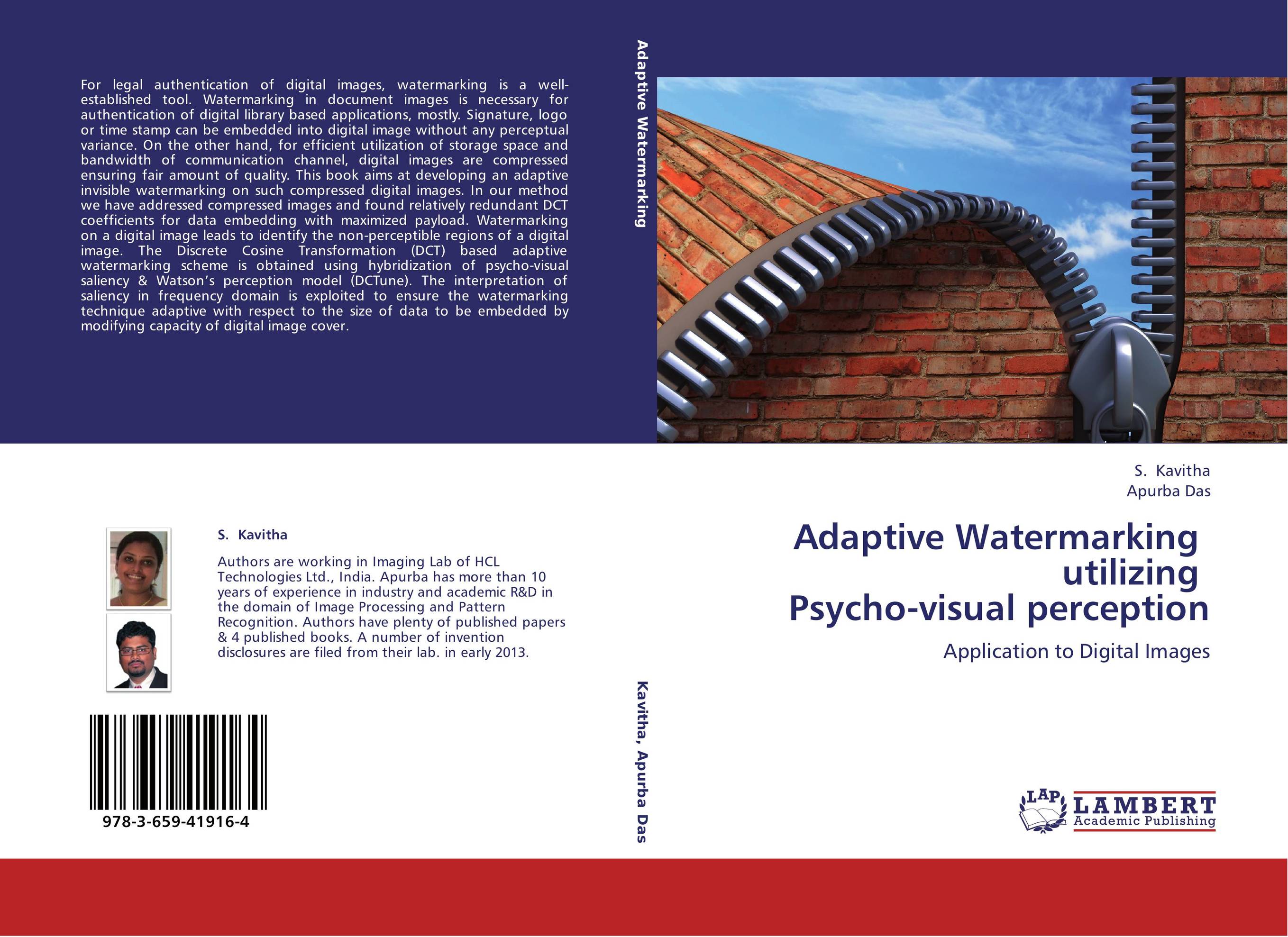| Поиск по каталогу |
|
(строгое соответствие)
|
- Профессиональная
- Научно-популярная
- Художественная
- Публицистика
- Детская
- Искусство
- Хобби, семья, дом
- Спорт
- Путеводители
- Блокноты, тетради, открытки
Adaptive Watermarking utilizing Psycho-visual perception. Application to Digital Images

В наличии
| Местонахождение: Алматы | Состояние экземпляра: новый |

Бумажная
версия
версия
Автор: S. Kavitha and . Apurba Das
ISBN: 9783659419164
Год издания: 2013
Формат книги: 60×90/16 (145×215 мм)
Количество страниц: 104
Издательство: LAP LAMBERT Academic Publishing
Цена: 32031 тг
Положить в корзину
| Способы доставки в город Алматы * комплектация (срок до отгрузки) не более 2 рабочих дней |
| Самовывоз из города Алматы (пункты самовывоза партнёра CDEK) |
| Курьерская доставка CDEK из города Москва |
| Доставка Почтой России из города Москва |
Аннотация: For legal authentication of digital images, watermarking is a well-established tool. Watermarking in document images is necessary for authentication of digital library based applications, mostly. Signature, logo or time stamp can be embedded into digital image without any perceptual variance. On the other hand, for efficient utilization of storage space and bandwidth of communication channel, digital images are compressed ensuring fair amount of quality. This book aims at developing an adaptive invisible watermarking on such compressed digital images. In our method we have addressed compressed images and found relatively redundant DCT coefficients for data embedding with maximized payload. Watermarking on a digital image leads to identify the non-perceptible regions of a digital image. The Discrete Cosine Transformation (DCT) based adaptive watermarking scheme is obtained using hybridization of psycho-visual saliency & Watson’s perception model (DCTune). The interpretation of saliency in frequency domain is exploited to ensure the watermarking technique adaptive with respect to the size of data to be embedded by modifying capacity of digital image cover.
Ключевые слова: security, Authentication, capacity, Watermarking, Digital Image, Psycho-visual perception



